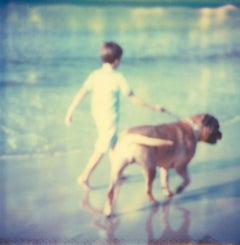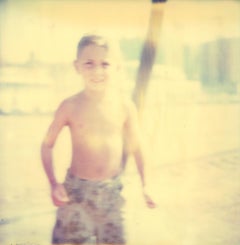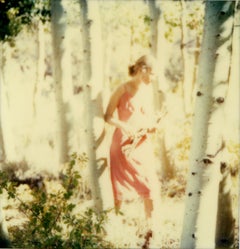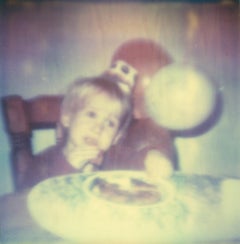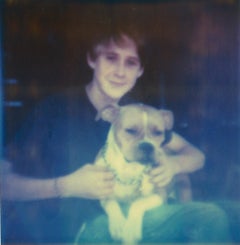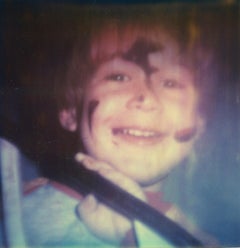Stefanie Schneider Photography
Early 2000s Contemporary Stefanie Schneider Photography
Photographic Film, Archival Paper, C Print, Color, Polaroid
Early 2000s Contemporary Stefanie Schneider Photography
Photographic Film, Archival Paper, C Print, Color, Polaroid
Early 2000s Contemporary Stefanie Schneider Photography
Archival Paper, Photographic Paper, C Print, Color, Polaroid
Early 2000s Contemporary Stefanie Schneider Photography
Photographic Film, Archival Paper, C Print, Color, Polaroid
Early 2000s Contemporary Stefanie Schneider Photography
Photographic Film, Archival Paper, C Print, Color, Polaroid
Early 2000s Contemporary Stefanie Schneider Photography
Photographic Film, Archival Paper, C Print, Color, Polaroid
Early 2000s Contemporary Stefanie Schneider Photography
Archival Paper, Photographic Paper, C Print, Color, Polaroid
Early 2000s Contemporary Stefanie Schneider Photography
Photographic Film, Archival Paper, C Print, Color, Polaroid
Early 2000s Contemporary Stefanie Schneider Photography
Photographic Film, Archival Paper, C Print, Color, Polaroid
Early 2000s Contemporary Stefanie Schneider Photography
Archival Paper, Photographic Paper, C Print, Color, Polaroid
Early 2000s Contemporary Stefanie Schneider Photography
Photographic Film, Archival Paper, C Print, Color, Polaroid
Early 2000s Contemporary Stefanie Schneider Photography
Photographic Film, Archival Paper, C Print, Color, Polaroid
Early 2000s Contemporary Stefanie Schneider Photography
Photographic Film, Archival Paper, C Print, Color, Polaroid
Early 2000s Contemporary Stefanie Schneider Photography
Archival Paper, Photographic Paper, C Print, Color, Polaroid
Early 2000s Contemporary Stefanie Schneider Photography
Archival Paper, Photographic Paper, C Print, Color, Polaroid
Early 2000s Contemporary Stefanie Schneider Photography
Archival Paper, Photographic Paper, C Print, Color, Polaroid
Early 2000s Contemporary Stefanie Schneider Photography
Archival Paper, Photographic Paper, C Print, Color, Polaroid
Early 2000s Contemporary Stefanie Schneider Photography
Archival Paper, Photographic Paper, C Print, Color, Polaroid
Early 2000s Contemporary Stefanie Schneider Photography
Archival Paper, Photographic Paper, C Print, Color, Polaroid
Early 2000s Contemporary Stefanie Schneider Photography
Archival Paper, Photographic Paper, C Print, Color, Polaroid
Early 2000s Contemporary Stefanie Schneider Photography
Archival Paper, Photographic Paper, C Print, Color, Polaroid
2010s Contemporary Stefanie Schneider Photography
Archival Paper, Photographic Paper, C Print, Color, Polaroid
Early 2000s Contemporary Stefanie Schneider Photography
Archival Paper, Photographic Paper, C Print, Color, Polaroid
Early 2000s Contemporary Stefanie Schneider Photography
Archival Paper, Photographic Paper, C Print, Color, Polaroid
Early 2000s Contemporary Stefanie Schneider Photography
Archival Paper, Photographic Paper, C Print, Color, Polaroid
Early 2000s Contemporary Stefanie Schneider Photography
Archival Paper, Photographic Paper, C Print, Color, Polaroid
Early 2000s Contemporary Stefanie Schneider Photography
Archival Paper, C Print, Color, Lambda, Polaroid
Early 2000s Contemporary Stefanie Schneider Photography
Archival Paper, Photographic Paper, C Print, Color, Polaroid
Early 2000s Contemporary Stefanie Schneider Photography
Archival Paper, Photographic Paper, C Print, Color, Polaroid
Early 2000s Contemporary Stefanie Schneider Photography
Archival Paper, Photographic Paper, C Print, Color, Polaroid
Early 2000s Contemporary Stefanie Schneider Photography
Archival Paper, Photographic Paper, C Print, Color, Polaroid
Early 2000s Contemporary Stefanie Schneider Photography
Archival Paper, Photographic Paper, C Print, Color, Polaroid
Early 2000s Contemporary Stefanie Schneider Photography
Archival Paper, Photographic Paper, C Print, Color, Polaroid
1990s Contemporary Stefanie Schneider Photography
Archival Paper, Photographic Paper, C Print, Color, Polaroid
Early 2000s Contemporary Stefanie Schneider Photography
Archival Paper, Photographic Paper, C Print, Color, Polaroid
Early 2000s Contemporary Stefanie Schneider Photography
Archival Paper, Photographic Paper, C Print, Color, Polaroid
Early 2000s Contemporary Stefanie Schneider Photography
Archival Paper, Photographic Paper, C Print, Color, Polaroid
1990s Contemporary Stefanie Schneider Photography
Archival Paper, Photographic Paper, C Print, Color, Polaroid
1990s Contemporary Stefanie Schneider Photography
Archival Paper, Photographic Paper, C Print, Color, Polaroid
1990s Contemporary Stefanie Schneider Photography
Archival Paper, Photographic Paper, C Print, Color, Polaroid
1990s Contemporary Stefanie Schneider Photography
Archival Paper, Photographic Paper, C Print, Color, Polaroid
Early 2000s Contemporary Stefanie Schneider Photography
Archival Paper, Photographic Paper, C Print, Color, Polaroid
1990s Contemporary Stefanie Schneider Photography
Archival Paper, Photographic Paper, C Print, Color, Polaroid
1990s Contemporary Stefanie Schneider Photography
Archival Paper, Photographic Paper, C Print, Color, Polaroid
1990s Contemporary Stefanie Schneider Photography
Archival Paper, Photographic Paper, C Print, Color, Polaroid
1990s Contemporary Stefanie Schneider Photography
Archival Paper, Photographic Paper, C Print, Color, Polaroid
1990s Contemporary Stefanie Schneider Photography
Archival Paper, Photographic Paper, C Print, Color, Polaroid
1990s Contemporary Stefanie Schneider Photography
Archival Paper, Photographic Paper, C Print, Color, Polaroid
2010s Contemporary Stefanie Schneider Photography
Archival Paper, Photographic Paper, C Print, Color, Polaroid
Early 2000s Contemporary Stefanie Schneider Photography
Archival Paper, Photographic Paper, C Print, Color, Polaroid
Early 2000s Contemporary Stefanie Schneider Photography
Archival Paper, Photographic Paper, C Print, Color, Polaroid
Early 2000s Contemporary Stefanie Schneider Photography
Archival Paper, Photographic Paper, C Print, Color, Polaroid
1990s Contemporary Stefanie Schneider Photography
Archival Paper, Photographic Paper, C Print, Color, Polaroid
2010s Contemporary Stefanie Schneider Photography
Archival Paper, Photographic Paper, C Print, Color, Polaroid
2010s Contemporary Stefanie Schneider Photography
Archival Paper, Photographic Paper, C Print, Color, Polaroid
2010s Contemporary Stefanie Schneider Photography
Archival Paper, Photographic Paper, C Print, Color, Polaroid
1990s Contemporary Stefanie Schneider Photography
Archival Paper, Photographic Paper, C Print, Color, Polaroid
1990s Contemporary Stefanie Schneider Photography
Archival Paper, Photographic Paper, C Print, Color, Polaroid
1990s Contemporary Stefanie Schneider Photography
Archival Paper, Photographic Paper, C Print, Color, Polaroid
1990s Contemporary Stefanie Schneider Photography
Archival Paper, Photographic Paper, C Print, Color, Polaroid
